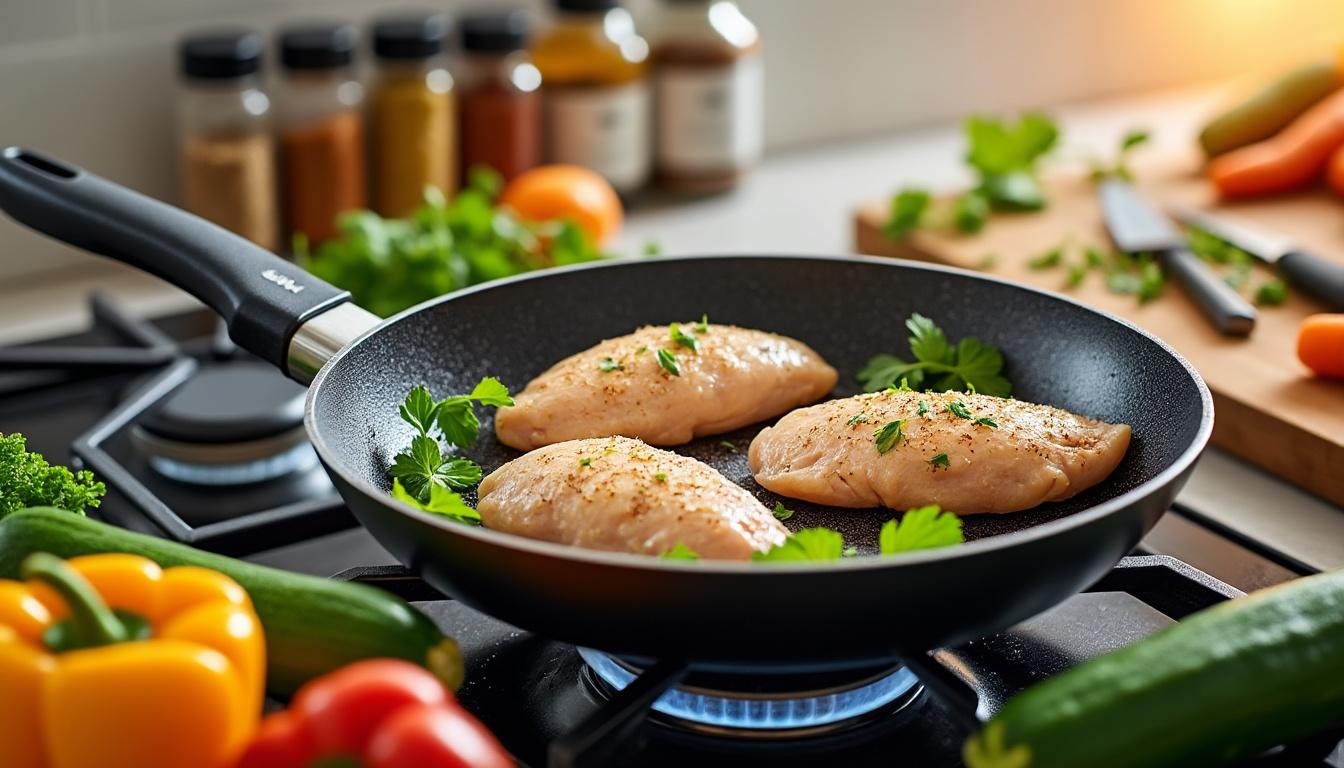Cooking Frozen Meat: essential guide to safe, fast techniques. Learn oven, air fryer and Instant Pot methods for juicy results and SecureSizzle every time.
Cooking Frozen Meat is now a practical daily solution for busy kitchens. This report outlines proven methods, safety checkpoints and time-saving tricks that professional cooks and home chefs use.
Cooking Frozen Meat Safely: Oven, Air Fryer and Instant Pot Methods
Cooking Frozen Meat can be both reliable and fast when using the right appliance and timing. The emphasis must remain on food safety, even when prioritizing speed.
Essential steps for a SecureSizzle outcome
Follow a controlled workflow to ensure consistent doneness and to avoid bacterial risks. A few simple precautions deliver better texture and flavor.
- Preheat the oven or air fryer to reach an even cooking environment.
- Increase cook time compared with thawed meat, usually ~50–100% longer for dense cuts.
- Use thermometers to confirm internal temps for safety and quality.
- Adopt branded approaches like EasyThaw and SafeDefrost in meal prep routines for consistency.
Practical references from culinary guides help refine technique; explore oven fundamentals at Ultimate Cooking Techniques and air fryer recipes at Air Fryer Delicious Recipes.
| Method | Typical Cook Time vs Thawed | Ideal Final Temp |
|---|---|---|
| Oven (roast) | ~1.5× to 2× longer | 165°F (poultry) / 145–160°F (beef/pork) |
| Air Fryer | ~1.25× to 1.75× longer | SecureSizzle finish with crisp exterior |
| Instant Pot / Pressure | Cook times similar but add pressure build time | Consistent, safe internal temps |
Key takeaway: start with a validated method and monitor with a probe thermometer to guarantee both safety and succulence.
NoThawNecessity Techniques That Preserve Flavor and Texture
Cooking Frozen Meat without thawing can preserve juices if handled correctly. Several modern techniques minimize moisture loss while accelerating service.
ChillChef, a fictional urban meal-prep startup, tested these workflows to scale quick meals while maintaining restaurant-level quality. Their protocol favors Direct2Pan searing after partial oven roasting.
Step-by-step tactics used by busy kitchens
- Seared finish: Start in the oven then pan-sear for a crisp crust.
- Layered seasoning: Apply dry rubs that adhere to frozen surfaces to enhance flavor.
- Resting period: Allow meat to rest to redistribute juices before slicing.
Learning resources and technique videos complement practice: review culinary lessons at Culinary Lessons and ingredient insights at Chefs Guide.
| Tip | Why it works | Pro note |
|---|---|---|
| Partial thaw by heat | Reduces surface ice and allows rubs to stick | Use medium-high oven for 10–15 minutes |
| High-heat finish | Creates Maillard browning without overcooking center | Finish at 425–450°F for 3–5 minutes |
| QuickCook brines | Enhances moisture retention in frozen cuts | Short 30-minute brine post-partial heat |
Practical insight: techniques that combine gentle thawing with a fast sear deliver the best compromise between speed and quality.
HassleFreeHeat and Food Safety: Timing, Tools and Best Practices
HassleFreeHeat approaches reduce errors during busy service. Emphasis falls on validated temperatures, reliable gear and cross-contamination prevention.
Brands and protocols such as FrostGuard checks and SafeDefrost timers are used as part of an SOP to maintain compliance and consistency.
Checklist to avoid common pitfalls
- Probe placement: Insert into the thickest part to read true core temp.
- Avoid slow cookers for fully frozen large cuts; they can keep meat too long in danger zones.
- Hygiene: Use separate surfaces and sanitize after prep.
Further reading: consult slow-cooker best practices at Slow Cooker Hacks and temperature chemistry at Olive Oil High Temperatures.
Operational insight: equip teams with thermometers, train on NoThawNecessity protocols and adopt a FrostGuard checklist to avoid risk and ensure quality.
Quick reference tips and workflow
- Label frozen portions with date and weight for accurate QuickCook timing.
- Use FrozenEase portioning to maintain even cook times across batches.
- Implement Direct2Pan finishing for rapid service during peak hours.
- Adopt packaging and thaw policies from resources like Inner Chef Home Cooking.
For recipe inspiration and diet-focused ideas, explore Chefs Ultimate Pasta Recipes and Diet Cooking for Brain Health, or quick flavor hacks at Cooking Tips Guy Fieri.
Final operational insight: a standardized HassleFreeHeat SOP transforms frozen inventory into dependable, high-quality service with minimal waste.
FAQ
Can Cooking Frozen Meat be as safe as thawed meat?
Yes — when following temperature guidelines, proper cook times and using a probe thermometer to confirm internal temperatures.
Is it okay to cook large frozen roasts in a slow cooker?
Slow cookers can keep meat too long at unsafe intermediate temperatures. Prefer oven or pressure cooking and consult expert guidance.
Which appliances provide the best results for frozen burgers and steaks?
Air fryers and high-heat ovens yield reliable crust and even cooking. For thin patties, pan-searing from frozen can work with shorter times using QuickCook strategies.
How does ChillChef manage frozen production in a commercial setting?
ChillChef uses standardized portioning (FrozenEase), validated cook schedules, and routine FrostGuard checks to ensure consistent results across shifts.
When should a home cook avoid cooking from frozen?
Avoid using methods that hold meat in the temperature danger zone for extended periods; do not use slow low-heat methods for large frozen cuts without prior partial thawing.

